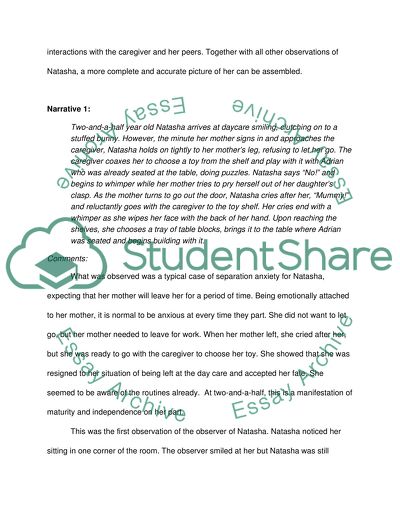Cite this document
(“Collection of Observations for Researching Children Assignment”, n.d.)
Retrieved from https://studentshare.org/psychology/1654475-qf4010-child-development-observation-and-assessment
Retrieved from https://studentshare.org/psychology/1654475-qf4010-child-development-observation-and-assessment
(Collection of Observations for Researching Children Assignment)
https://studentshare.org/psychology/1654475-qf4010-child-development-observation-and-assessment.
https://studentshare.org/psychology/1654475-qf4010-child-development-observation-and-assessment.
“Collection of Observations for Researching Children Assignment”, n.d. https://studentshare.org/psychology/1654475-qf4010-child-development-observation-and-assessment.


